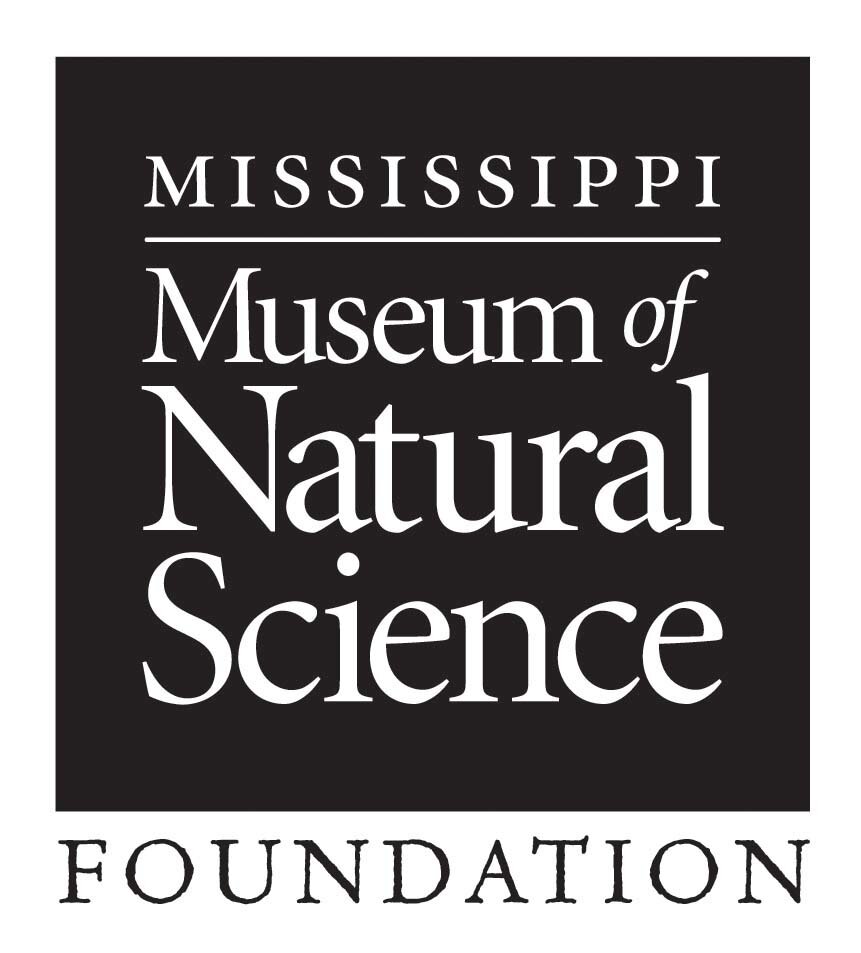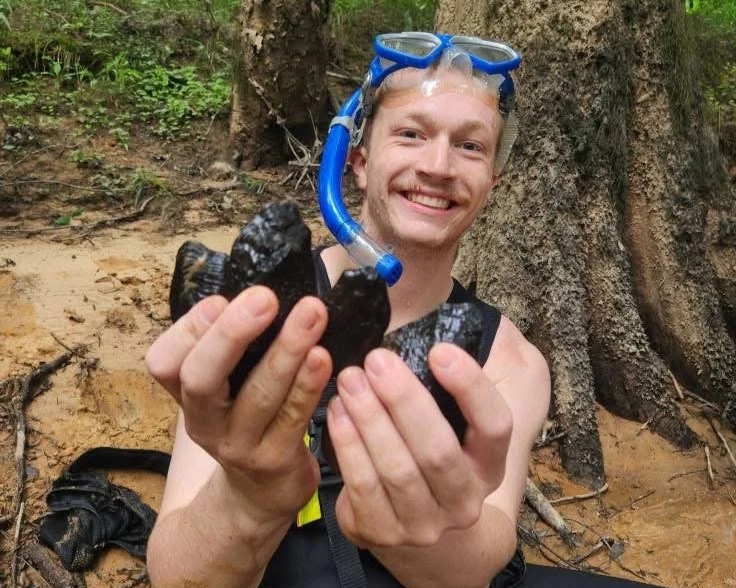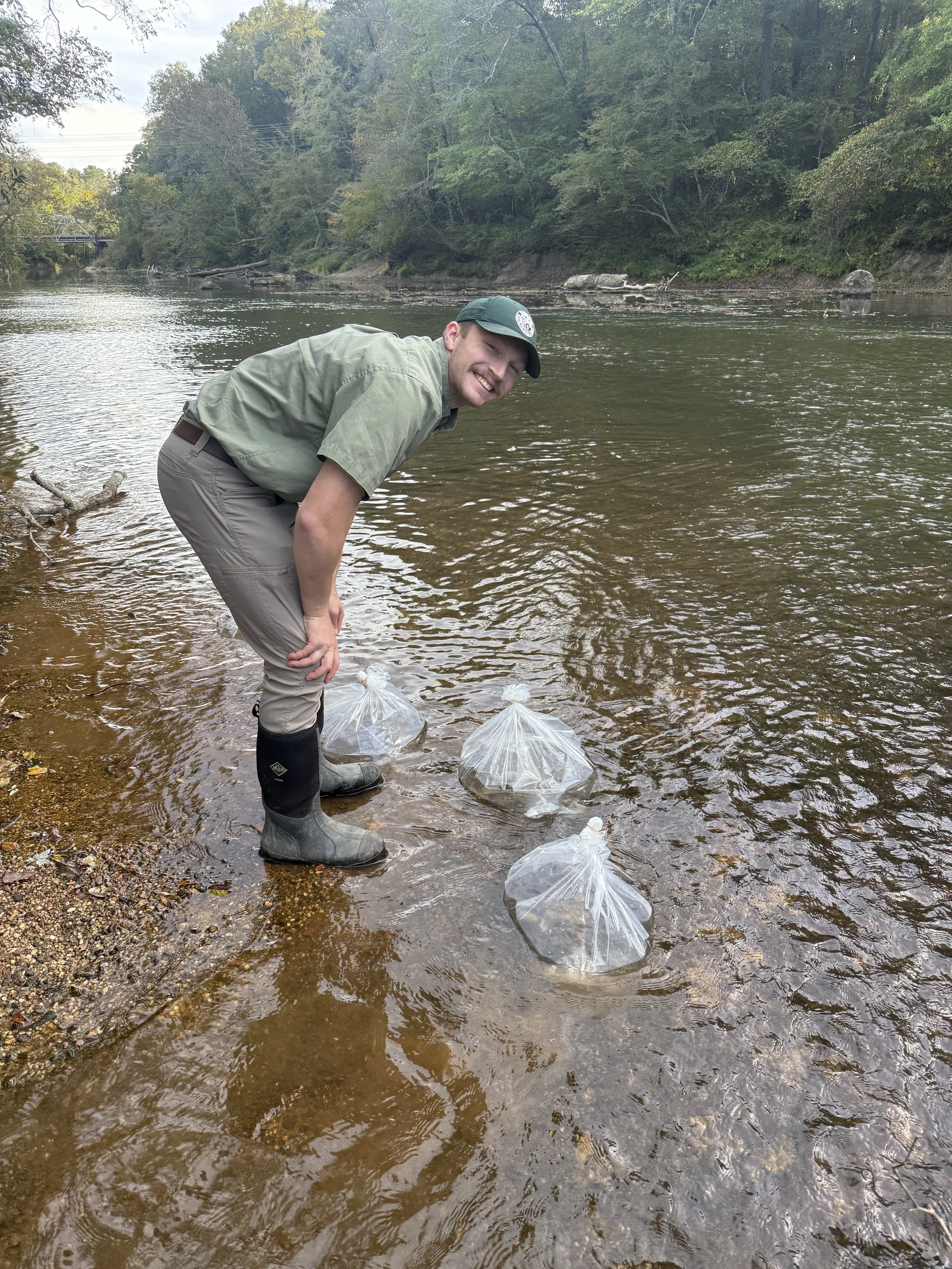Nathan Prine, Environmental/Natural Resources Technician, brings his lifelong love of wildlife full circle at the Museum. Whether he’s freediving for mussels, cataloging new fish specimens, or prepping for a regional ichthyology conference, Nathan is all-in when it comes to science and conservation.
And to think - it all started with visits to the Museum as a kid.
Read how his early curiosity turned into a career he’s proud of, and why he says working with federally threatened and petitioned species is a dream come true.
HOW LONG HAVE YOU WORKED FOR MDWFP’S MISSISSIPPI MUSEUM OF NATURAL SCIENCE?
I’ve worked for the Museum 3 months as an intern, 4 months as a Technician; 7 months total.
WHAT’S YOUR WORKDAY LIKE?
My workday fluctuates with the time of year.
During the warmer months, most of the week you will find me helping with fieldwork in a stream seining for fish, freediving for mussels, or dipnetting for crawfish.
During the colder months where fieldwork isn’t an option, you can find me doing upkeep or changes within the aquatic collections or cataloging new specimens into the collection.
More recently, I have been preparing for a regional Ichthyology conference and changing labels within the collections due to some recent taxonomic changes.
TELL US A BIT ABOUT YOUR BACKGROUND AND EDUCATION
I am a Mississippi native who has lived in Rankin County for most of my life.
Growing up, my family frequently visited the Mississippi Museum of Natural Science, which played a major role in developing my early fascination with wildlife and the natural world.
I spent my childhood involved in just about every sport available, but I always found myself pulled back toward science.
Fishing has also been a long-standing part of my life - initially as a hobby, and now as a meaningful connection to my academic and professional interests. That passion took on a new dimension when I had the opportunity to work at the museum.
I am currently a senior Biology major at Mississippi College, where I have participated in three research projects: two investigating the use of invertebrates to remove heavy metals from aqueous environments, and another, my current project, where I am leading the cataloging and care of my university’s specimen collection.
WHY DID YOU CHOOSE THIS CAREER?
I chose this career because I want the natural resources that I work with regularly to be around for many generations to come.
I am very grateful to be a part of a select few that get to work with federally threatened and petitioned species regularly.
It is still hard for me to believe that I get to freedive for mussels and handle beautiful fish for a living.
HOW DOES YOUR JOB CONTRIBUTE TO CONSERVATION?
I contribute to conservation by assisting with surveys that work with imperiled species throughout the state to obtain more information on distribution, life history, diet, and genetics.
My work inside of the museum also contributes to conservation by providing conservation researchers with accurate and up-to-date records and information.
ANY ADVICE FOR A STUDENT INTERESTED IN A BIOLOGY OR MUSEUM CAREER?
Plan early and often!
In my experience, emailing professionals within a field you are interested in can also be a valuable resource and they are often pretty friendly.
If you don’t have the opportunity to learn what you need for this career in a classroom, it can often be found within books or by volunteering within a museum setting.




